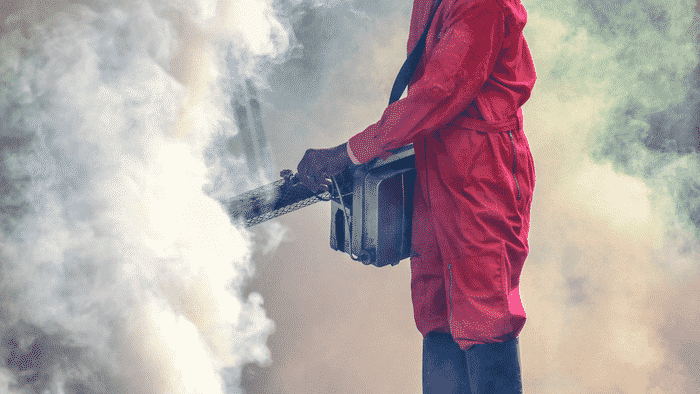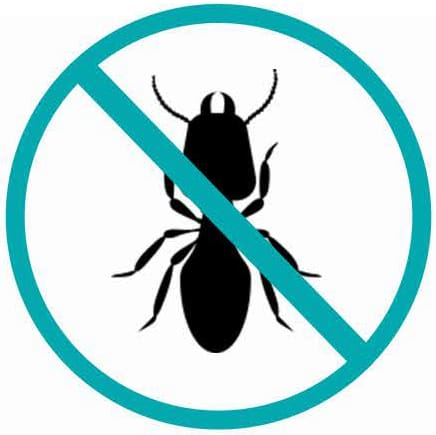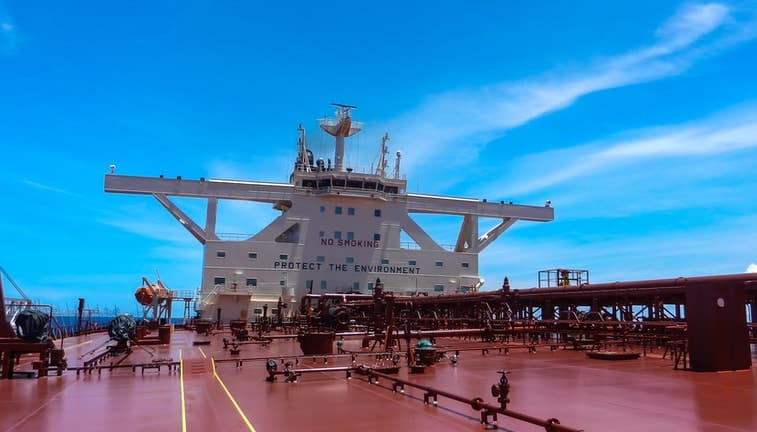Ahoy there! Get ready to set sail into the world of pest control in the maritime industry. This article will take you on a voyage exploring the unique challenges faced by ships and vessels when it comes to dealing with pesky pests. From rats scurrying through the cargo holds to mosquitoes buzzing around the crew quarters, we’ll uncover the most effective pest control solutions to keep these unwanted visitors at bay. So grab your anchor and join us as we navigate through the fascinating world of pest control on the open seas.
Introduction
Welcome to our comprehensive guide on pest control in the maritime industry! In this article, we will explore the importance of pest control in this unique sector, the common pests that can wreak havoc on ships and ports, as well as the various methods and prevention measures used to combat these unwanted intruders. Whether you work in the maritime industry or simply have an interest in the subject, we hope this information proves useful to you.
The Importance of Pest Control in the Maritime Industry
Health and Safety Risks
Pest control in the maritime industry is of utmost importance due to the significant health and safety risks posed by pests. Maritime workers spend long periods of time on ships and in ports, and their well-being is crucial for efficient operations. Pests such as rodents, cockroaches, and mosquitoes can carry and transmit serious diseases, putting the health of workers at risk. Additionally, the presence of pests can lead to accidents and injuries, as infestations can weaken structures and create hazardous conditions.
Economic Impact
Effective pest control is also essential to mitigate the economic impact that pests can have on the maritime industry. Infestations can damage valuable cargo, contaminate food supplies, and destroy equipment, leading to significant financial losses. Furthermore, the presence of pests can result in delays in shipments and port closures, affecting trade and causing additional costs.
Environmental Concerns
Pest control in the maritime industry also plays a vital role in protecting the environment. Invasive pests that hitch a ride on ships can disrupt fragile ecosystems and cause harm to native species. These pests can outcompete indigenous organisms, leading to imbalances in the ecosystem and potentially causing irreversible damage. By implementing effective pest control measures, the maritime industry can help prevent the spread of invasive species and contribute to environmental sustainability.

Common Pests in the Maritime Industry
When it comes to the maritime industry, several persistent pests can cause havoc if left unchecked. Here are some of the most common pests encountered in this industry:
Rats and Mice
Rats and mice are notorious pests in the maritime industry. They can quickly multiply, causing extensive damage to ship structures, wiring, and insulation. Not only do they contaminate food supplies, but their presence also poses a significant health risk due to the diseases they carry.
Cockroaches
Cockroaches are resilient pests that can survive in various environments, including ships and ports. They reproduce rapidly and can contaminate food, spread bacteria, and trigger allergies and asthma. Cockroach infestations must be addressed promptly to prevent further spread and damage.
Bed Bugs
Bed bugs are hitchhikers that can easily infest ships and spread to various areas. These pests feed on human blood and can cause itchy, painful bites. Bed bug infestations can disrupt sleep, compromise hygiene, and have a detrimental impact on the well-being of maritime workers.
Termites
Termites are a serious threat to the maritime industry, as they can cause extensive damage to wooden structures and cargo. These silent destroyers can weaken vessels and port facilities, leading to safety hazards and significant repair costs.
Mosquitoes
Mosquitoes not only cause discomfort with their itchy bites, but they can also transmit diseases such as malaria, dengue fever, and Zika virus. In the maritime industry, where ships dock in various locations, mosquitoes can pose a significant health risk to workers.
Flies
Flies are not only a nuisance but can also transmit diseases. They can contaminate food and surfaces, posing a threat to hygiene and health. The close quarters of ships and ports provide favorable breeding conditions for flies, making effective pest control crucial.
Methods of Pest Control in the Maritime Industry
To combat the pests that pose a threat to the maritime industry, a combination of methods is employed. Let’s take a closer look at the different approaches used:
Prevention Measures
Prevention is the first line of defense against pests in the maritime industry. Implementing good hygiene practices, such as regularly cleaning and sanitizing areas, can help deter pests. Inspection and monitoring should also be conducted regularly to detect any signs of infestation early on. Sealing entry points, such as cracks and gaps, prevents pests from gaining access to ships and ports. Proper waste management is crucial, as it eliminates potential food sources for pests.
Chemical Control
Chemical control involves the use of pesticides to manage pest populations. Different types of pesticides are used depending on the pest and the circumstances. Safe handling and application of pesticides are essential to protect the health and safety of workers. Regulatory compliance is also crucial, as the maritime industry must adhere to specific guidelines and regulations regarding the use of pesticides.
Biological Control
Biological control involves introducing natural predators or using microbial control agents to manage pest populations. For example, certain species of wasps can be introduced to control cockroach populations, while bacterial pathogens can target specific pests without harming beneficial organisms. Biological control is an environmentally friendly approach that reduces the reliance on chemical pesticides.
Physical Control
Physical control methods involve using traps, barriers, heat treatments, or electromagnetic devices to manage pests. Traps and barriers can be used to capture and eliminate pests, while heat treatments can effectively eliminate bed bugs and other heat-sensitive pests. Electromagnetic devices emit electromagnetic waves that disrupt pests’ communication and breeding patterns, providing non-chemical pest control options.

Prevention Measures
To prevent pest infestations in the maritime industry, several key prevention measures should be implemented:
Good Hygiene Practices
Maintaining good hygiene practices is essential to prevent pest infestations. Regularly cleaning and sanitizing areas, particularly those prone to food spills and waste accumulation, helps eliminate potential food sources for pests.
Inspection and Monitoring
Regular inspection and monitoring of ships and ports help identify any signs of pest activity early on. By detecting infestations in their initial stages, prompt action can be taken to prevent further spread and damage.
Sealing Entry Points
Sealing entry points, such as cracks and gaps, is crucial to prevent pests from gaining access to ships and ports. This prevents infestations from occurring in the first place and helps maintain a pest-free environment.
Proper Waste Management
Proper waste management is essential in preventing pest infestations. Waste should be disposed of in sealed containers and removed from ships and ports regularly. This prevents pests from being attracted to food waste and breeding in the vicinity.
Chemical Control
Chemical control is a commonly used method in the maritime industry to manage pest populations. It involves the use of various pesticides to effectively eliminate pests. Here are some important aspects to consider when utilizing chemical control:
Types of Pesticides
Different types of pesticides are used depending on the specific pest and the circumstances. Insecticides target insects, rodenticides kill rodents, and fungicides combat fungal infestations. It is important to choose the appropriate pesticide based on the pest being targeted and to follow all label instructions carefully.
Safe Handling and Application
Safe handling and application of pesticides are crucial to protect the health and safety of workers. Protective equipment should be worn during spraying, and proper training should be provided to ensure responsible pesticide use. Following safety guidelines is essential to prevent any adverse effects on humans or the environment.
Regulatory Compliance
The maritime industry must adhere to specific guidelines and regulations regarding the use of pesticides. Legal and regulatory compliance is essential to prevent any negative impacts on the environment and to ensure the safety of workers and the public.

Biological Control
Biological control offers an environmentally friendly approach to managing pest populations in the maritime industry. Here are two main methods used:
Introduction of Natural Predators
Certain species of natural predators can be introduced to control pest populations. For example, introducing specific wasp species to control cockroaches can be an effective and sustainable method. The introduced predators target the pests without causing harm to beneficial organisms or the environment.
Microbial Control Agents
Microbial control agents, such as bacteria or viruses, can be used to combat pests in the maritime industry. These agents target specific pests and offer an alternative to chemical pesticides. Microbial control is considered a safe and environmentally friendly option.
Physical Control
Physical control methods involve the use of various techniques to manage pests without relying on chemicals. Here are some effective physical control methods used in the maritime industry:
Traps and Barriers
Traps and barriers can be used to capture and eliminate pests such as mice, rats, and flies. For example, rodent traps can be strategically placed to catch and remove rodents, while fly screens can be installed to prevent flies from entering ships and ports.
Heat Treatments
Heat treatments can be used to effectively eliminate bed bugs and other heat-sensitive pests. By raising the temperature in infested areas to a level that is lethal to the pests, heat treatments provide a chemical-free approach to pest control.
Electromagnetic Devices
Electromagnetic devices emit electromagnetic waves that disrupt pests’ communication and breeding patterns, effectively managing their populations. These devices are safe for humans and pets, making them a popular choice for non-chemical pest control in the maritime industry.

Integrated Pest Management (IPM) in the Maritime Industry
Integrated Pest Management (IPM) is a comprehensive approach that combines multiple pest control methods to achieve long-term pest management. IPM focuses on prevention, monitoring, and the use of appropriate control strategies. Here are some benefits of implementing IPM in the maritime industry:
Benefits of IPM
- Reduced reliance on chemical pesticides
- Minimized impact on the environment
- Long-term pest management
- Improved health and safety for workers
- Reduced economic losses due to pest damage
Key Components of IPM
The key components of IPM in the maritime industry include:
- Regular inspection and monitoring for early detection of pests
- Implementation of prevention measures to reduce pest entry and breeding
- Utilization of biological control methods to minimize chemical pesticide use
- Strategic and targeted use of chemical control methods when necessary
- Continuous evaluation and adaptation of pest control strategies based on effectiveness
Product Reviews
As part of our commitment to providing you with comprehensive information, we will also be sharing some product reviews related to pest control in the maritime industry. These product reviews will help guide you in selecting effective pest control solutions for your specific needs. Stay tuned for our upcoming reviews!
In conclusion, pest control in the maritime industry is of utmost importance to ensure the health and safety of workers, prevent economic losses, and protect the environment. By implementing a combination of prevention measures, chemical control, biological control, and physical control methods, the maritime industry can effectively manage pest populations and maintain a pest-free environment. Remember to prioritize prevention and consider integrated pest management approaches for long-term success.


I am Randy, the author behind PestControld.com. Drawing from decades of experience, I aim to provide valuable insights, expert advice, and practical recommendations to help you make informed decisions when assessing viable pest control solutions.